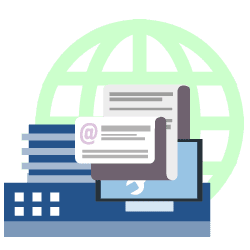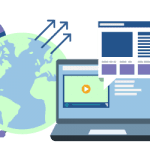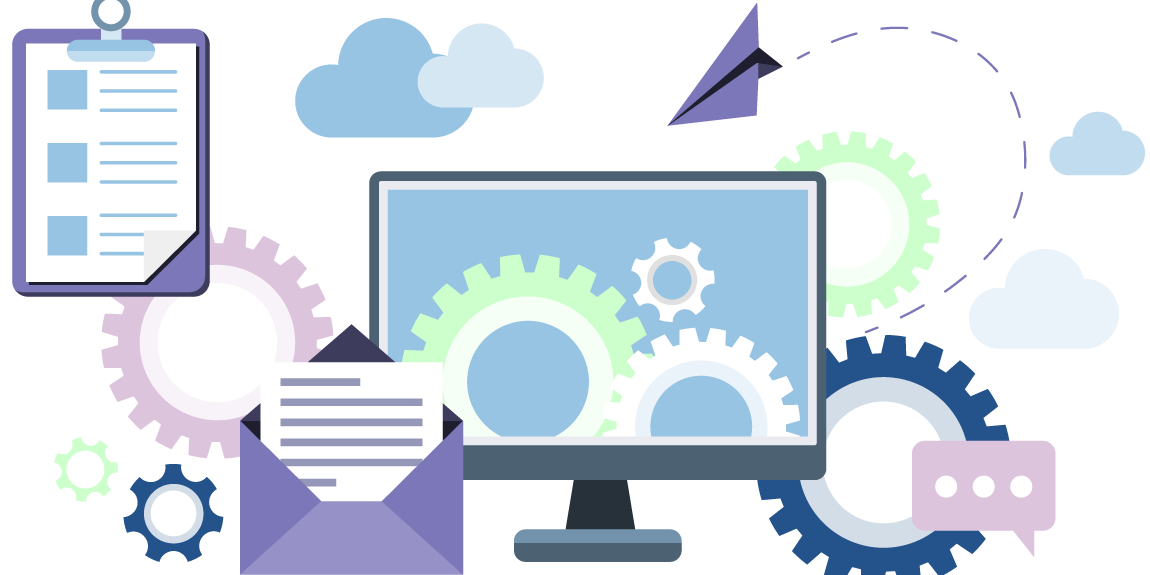CAT is an acronym for Computer-Assisted Translation. CAT tools are a type of a assistance translation program that human translators use to facilitate the entire translation process. They are often addressed as machine assisted or machine aided translation tools.
What Are The Advantages of Using CAT Tools?
 Hence, Computer Assisted Translation tools are software applications that provide assistance to translators and linguists to increase the speed and accuracy of the translation services they provide. These tools may be just what translators need to bring any translation work to the next level.
Hence, Computer Assisted Translation tools are software applications that provide assistance to translators and linguists to increase the speed and accuracy of the translation services they provide. These tools may be just what translators need to bring any translation work to the next level.
CAT Tools offer a better and a faster translator system which can help translators earn more money due to the increase in production. Thus, translators will have more free or leisure time. This computer program helps translate text documents cost-effectively.
What Are The Four Primary Functions of Such Tools?
- Segments Texts
Computer Assisted Translation Tools divide the text into segments that will be translated in sentences or segments of sentences. The tools will then present the segments in a desirable way to provide ease and speed in translating.
- Translation Unit or TU
A CAT Tool saves the translation and the source text of every segment in one unit referred to as a Translation Unit, or TU and a translator can always go back to a segment at any time to verify the translation. There are special functions in the tool that will help in quality control. The special functions of the tool will aid a translator in navigating through the text and locating segments that require translation or revision.
- Translation Memory or TM
The primary function of CAT Tools is to save the translation units or TU in a database. The translation memory is the name given to the storage room of the translation units. With TM, translation units can be reused for any other purposes, and search functions can help in quality control. Thus, translation services are coherent and consistent.
- Terminology Databases
Computer Assisted Translation Tools include automatic look-up in terminology databases. With this, the tools can provide automatic display and insertion of the search results.
Aside from this, there are other valuable functions that those tools offer such as formatting, importing and exporting tools, indexing, internet resources, quality checking, statistical tools, post-production tools among others.
CAT Tools:
 A little help can go a long way in making your task easier. It may be hard for you to admit that you need help, but the right kind of assistance can take some worry off of your shoulders. Since no one has enough time these days and managing all your chores seems impossible, the assistance of any kind can relieve your tension. Technology has many benefits, and one of them is the assistance it provides us in various ways. From simple tasks like calculating figures to complex chores of reading graphs, computers can do almost everything.
A little help can go a long way in making your task easier. It may be hard for you to admit that you need help, but the right kind of assistance can take some worry off of your shoulders. Since no one has enough time these days and managing all your chores seems impossible, the assistance of any kind can relieve your tension. Technology has many benefits, and one of them is the assistance it provides us in various ways. From simple tasks like calculating figures to complex chores of reading graphs, computers can do almost everything.
Computers can also help translators in finishing their job in time. CAT Tools help translators complete each translation with accuracy. CAT tools allow translators to relax and use saved translation segments and words in different documents easily. With the help of CAT tools, translators can save time and produce more translations in less time.

The Advantages of CAT Tools
• Speed: CAT tools can lead to considerable increases in terms of the rate of translation. The more repeat phrases in a document, the higher the improvement.
• Consistency: Specific phrases have already been translated and reviewed for accuracy; they’ll be moved from the TM and be the same wherever they’re used. Even across different projects and different translators.
• Ability to share: Will your project need some translators operating at the same time? With a Cloud-based tool, you’ll manage the CAT advantages of speed and consistency.
• Better for technical documents: Because of the possibility of there being a large amount of redundancy in technical, medical, financial or legal documents, for instance, TMs can be filled very fast and have much higher efficiency when used on this sort of project.
• The format is no problem: It doesn’t matter what format a particular project needs. By using the right tool, your project will still get the above benefits.
CAT tools enhance translation process
Professional translators play a vital role in ensuring the success of translation projects by delivering high-quality translations that meet the needs of clients. Whether they are freelance translators or employed by translation agencies or Language Service Providers (LSPs), their expertise is essential for producing accurate and culturally appropriate translations. Professional translators often utilize computer-assisted translation (CAT) tools to streamline the translation process, manage terminology, and ensure consistency across projects. These tools, along with machine translation engines, aid in improving efficiency while maintaining translation quality. Throughout the translation workflow, translators adhere to quality assurance procedures, including thorough reviews and checks for consistency, style adherence, and the elimination of human errors. With the increasing demand for localization projects and the wide variety of file formats involved, professional translators leverage their skills and knowledge to deliver precise and reliable translations in real time. Translation companies rely on professional translators to provide cost-effective solutions while offering core features such as powerful terminology management, support for various language pairs, and robust project management capabilities. Overall, professional translators play a crucial role in the translation industry by delivering high-quality translations that meet the diverse needs of clients across different sectors and languages.
CAT Tools: Essential for Translation
Programming languages are the backbone of software development, serving as the building blocks for creating applications, websites, and various digital solutions. As the demand for multilingual content grows, online CAT tools and CAT software have become indispensable for professional translators. These tools streamline the translation process by allowing translators to work directly with the source document, ensuring accurate translations while offering a variety of features such as terminology management and file format compatibility. Whether translating from a single source language or multiple languages, CAT tools support a range of file formats, enabling seamless integration with translation memory and term bases. With the integration of artificial intelligence and cloud-based technology, CAT tools facilitate quality checks and reduce translation costs, making them essential for efficient translation workflows. Key features such as powerful translation memory, style guides, and consistent terminology ensure high-quality translations and save valuable time for translators.
By utilizing translation management systems and Translation Memory (TM), translators benefit from a complete translation environment that enhances productivity and prepares them for future translation projects. With the ability to provide instant translations and exact matches, CAT tools are invaluable resources in the translation industry, supporting translators in delivering accurate and reliable translations while maintaining quality assurance checks and adhering to style guides.
Boosting Efficiency with CAT Tool Keyboard Shortcuts
Keyboard shortcuts are indispensable tools for enhancing efficiency and productivity when using Computer-Aided Translation (CAT) tools. These shortcuts allow translators to perform various functions quickly, without the need to navigate through menus or use a mouse extensively. By memorizing and utilizing keyboard shortcuts, translators can streamline their workflow, saving valuable time and effort. Whether it’s navigating between segments, inserting tags, or confirming translations, keyboard shortcuts enable translators to work more seamlessly within CAT tools, ultimately leading to faster and more accurate translations.Employees are expected to attend meetings on a regular basis.
XTM Cloud is a popular CAT (Computer-Assisted Translation) tool renowned for its wide range of powerful features that streamline translation processes and enhance efficiency. One of its key advantages is cost savings, as it optimizes workflow management and reduces turnaround times for translations. Being cloud-based, XTM Cloud allows translators to access projects and collaborate from anywhere, promoting flexibility and productivity. Its robust translation memory feature not only ensures consistency across translations but also boosts accuracy by storing previously translated segments for reuse. The tool’s advanced capabilities, such as translation suggestions based on AI algorithms, further expedite the translation process while maintaining linguistic quality. Whether handling an original document or integrating with project management tools, XTM Cloud stands out for its user-friendly interface and comprehensive support, making it a preferred choice for professional translators and organizations alike.
FREQUENTLY ASKED QUESTIONS
- CAT tools streamline the translation process, allowing translators to work more efficiently by providing features like translation memory, terminology management, and automated quality checks.
CAT software helps maintain consistency and accuracy by storing previously translated segments in a translation memory database, ensuring that identical or similar phrases are translated consistently throughout a document or project.
- Terminology management in CAT tools allows translators to maintain consistent terminology across projects, ensuring accurate translations and aligning content with client preferences or industry standards.
- Yes, CAT tools can reduce translation costs by increasing translator efficiency, minimizing redundant work through the use of translation memory, and providing tools for terminology management and quality assurance checks.
CAT tools facilitate collaboration among translation teams by allowing multiple translators to work on the same project simultaneously, enabling real-time updates, sharing of translation memory and terminology databases, and seamless communication within the platform.








